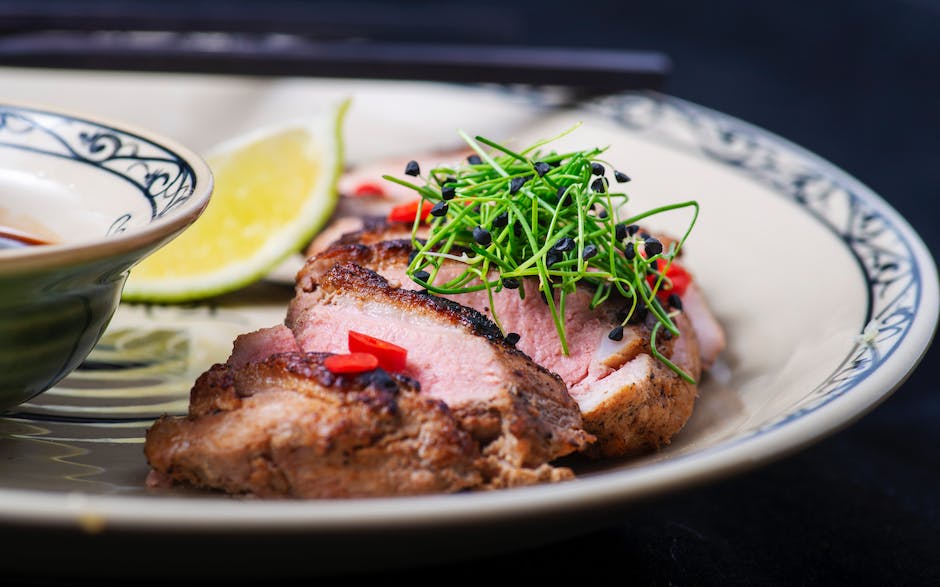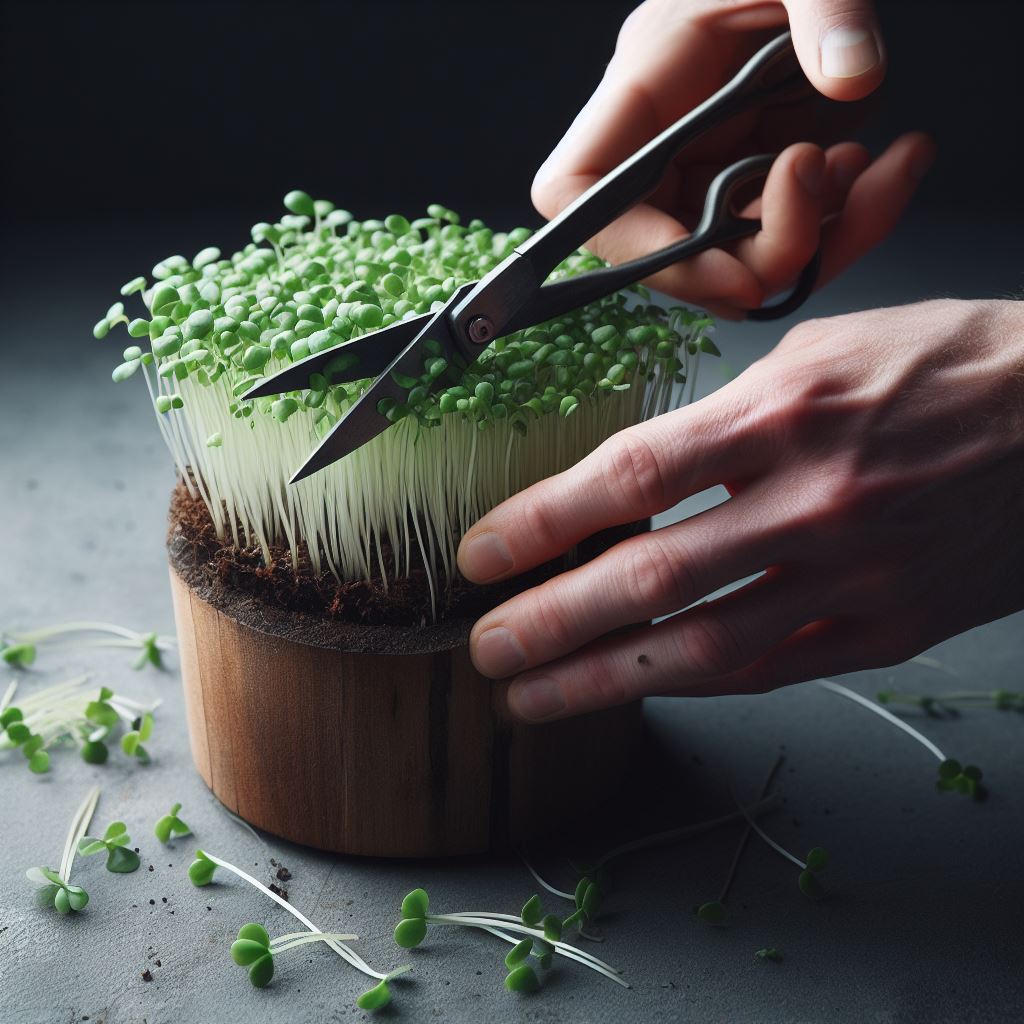Exploring Different Types of Microgreens and Their Unique Flavors
Introduction
Microgreens, despite their diminutive size, are a culinary powerhouse that have gained immense popularity in recent years. These tiny, immature plants are harvested at the cotyledon stage, boasting their first set of true leaves. Bursting with flavor and nutrition, microgreens come in a diverse array of types, each with its own unique taste profile. From the peppery kick of arugula to the tangy zest of radish, they offer a spectrum of flavors capable of elevating any dish. What truly sets microgreens apart is their concentrated nutrient content, often surpassing that of their fully grown counterparts. Whether you’re a seasoned chef or a home cook seeking to infuse freshness into your meals, exploring the world of microgreens is bound to tantalize your taste buds and enrich your culinary creations.
What are microgreens?
Microgreens are tiny, immature plants that are harvested at the cotyledon stage, when they have developed their first set of true leaves. Despite their small size, microgreens pack a powerful punch of flavor and nutrition. These baby plants come in a wide variety of types, each with their own unique taste profile. From peppery arugula to tangy radish, microgreens offer a range of flavors that can elevate any dish. What sets microgreens apart is their concentrated nutrient content, often containing higher levels of vitamins and antioxidants compared to their mature counterparts. Whether you’re a seasoned chef or a home cook looking to add a burst of freshness to your meals, exploring the world of microgreens is sure to excite your taste buds and enhance your culinary creations.

Why are microgreens popular?
Microgreens have gained immense popularity in recent years, and for good reason. These tiny greens are not only visually appealing but also pack a powerful punch of flavor. What sets microgreens apart from their fully grown counterparts is their concentrated taste, as they are harvested at a very early stage of growth. This means that you can enjoy the distinct flavors of various herbs, vegetables, and edible flowers in a single bite. From the peppery kick of radish microgreens to the delicate sweetness of sunflower shoots, each type of microgreen offers a unique flavor profile that can elevate any dish. Additionally, microgreens are packed with essential nutrients, making them a nutritious and flavorful addition to salads, sandwiches, and many other culinary creations.
Different types of microgreens
Microgreens are a diverse and exciting category of greens that pack a punch when it comes to flavor. From peppery arugula to tangy mustard greens, each type of microgreen offers its own unique taste profile. These miniature versions of full-grown vegetables are harvested at an early stage, typically when they have developed their first set of true leaves. What sets microgreens apart is their concentrated flavor, as their small size allows for a more intense taste experience. Whether you’re looking to add a burst of freshness to your salads or enhance the flavors of your dishes, exploring different types of microgreens is a delightful journey into the world of vibrant and distinctive flavors.
Nutritional benefits of microgreens
Microgreens are not only a trendy garnish but also a powerhouse of nutrition. These tiny greens, harvested at an early stage of growth, pack a punch when it comes to vitamins, minerals, and antioxidants. In fact, studies have shown that microgreens can contain up to 40 times more nutrients than their mature counterparts. Each type of microgreen offers its own unique flavor profile, from the peppery kick of radish microgreens to the delicate sweetness of sunflower microgreens. Incorporating a variety of microgreens into your diet can not only elevate the taste of your dishes but also provide a concentrated dose of essential nutrients. So, whether you’re a health enthusiast or a food lover, exploring the world of microgreens can add a vibrant and nutritious twist to your culinary adventures.
Microgreen flavors and taste profiles
Microgreens are not only visually appealing but also bursting with unique flavors and taste profiles. Each type of microgreen offers a distinct flavor that can enhance your culinary creations. For instance, arugula microgreens have a peppery and slightly bitter taste, adding a delightful kick to salads and sandwiches. On the other hand, radish microgreens have a spicy and tangy flavor that can elevate the taste of any dish. Meanwhile, cilantro microgreens provide a refreshing and citrusy note, perfect for garnishing Mexican-inspired dishes. By experimenting with different types of microgreens, you can unlock a world of flavors and elevate your dishes to new heights.
How to grow microgreens at home
Growing microgreens at home is a rewarding and delicious way to add fresh flavors to your meals. To start, choose from a wide variety of microgreen seeds, such as radish, kale, or broccoli, each offering its own unique taste profile. When it comes to growing, it’s important to provide the right conditions for success. Keep your microgreens in a warm and well-lit area, ensuring they receive adequate sunlight or artificial light. Additionally, make sure to water them regularly, keeping the soil moist but not overly saturated. With patience and care, you’ll soon be able to harvest these vibrant greens, packed with intense flavors and a nutritional punch, right from the comfort of your own home.
Tips for harvesting and storing microgreens
Harvesting and storing microgreens properly is key to preserving their unique flavors and maximizing their freshness. When harvesting microgreens, it is important to use clean and sharp scissors to avoid damaging the delicate leaves. Cut the stems just above the soil level, taking care not to bruise or crush the greens. After harvesting, gently wash the microgreens with cold water to remove any dirt or debris. To store them, wrap the microgreens in a damp paper towel and place them in an airtight container or zip-top bag. This will help to maintain their moisture and crispness. Stored in the refrigerator, microgreens can stay fresh for up to a week, allowing you to enjoy their vibrant flavors and nutritional benefits for longer.

Creative ways to use microgreens in cooking
Microgreens are not only visually appealing but also pack a punch of flavor that can elevate any dish. There are countless creative ways to incorporate these miniature greens into your cooking. One idea is to use microgreens as a beautiful and tasty garnish for soups, salads, or even cocktails. Their delicate texture and vibrant colors can add a pop of freshness to any plate. Another way to utilize microgreens is by incorporating them into sandwiches or wraps for an added crunch and burst of flavor. Additionally, you can experiment with using microgreens as the main ingredient in dishes such as pesto or stir-fries, where their unique flavors can shine. By exploring these different ways to use microgreens, you can unlock a world of culinary possibilities and take your dishes to the next level.
Popular microgreen recipes to try
Popular microgreen recipes are a great way to explore the unique flavors of these miniature plants. From salads to sandwiches, microgreens can add a burst of freshness and complexity to your dishes. One popular recipe is a microgreen salad with a tangy vinaigrette, combining the delicate flavors of arugula microgreens with the bright acidity of lemon juice. Another delicious option is a microgreen pesto, where the peppery notes of mustard microgreens complement the richness of pine nuts and Parmesan cheese. These recipes not only showcase the versatility of microgreens but also highlight their nutritional benefits, as these tiny greens are packed with vitamins and minerals. So why not get creative in the kitchen and let microgreens elevate your culinary experience?
Conclusion: Adding microgreens to your diet
Adding microgreens to your diet is a simple and delicious way to enhance your meals with unique flavors and an extra nutritional punch. Microgreens are not only visually appealing but also packed with essential vitamins, minerals, and antioxidants. From peppery arugula to tangy radish, each type of microgreen offers its own distinct taste profile, allowing you to experiment and elevate the flavors in your dishes. Whether you sprinkle them on top of salads, incorporate them into sandwiches, or use them as a garnish for soups and main courses, microgreens are a versatile and healthy addition to any culinary repertoire. So why not embrace the world of microgreens and explore the vast array of flavors they have to offer? Your taste buds and your health will thank you.
FAQs
1. Why are microgreens popular?
Microgreens have surged in popularity due to their visually appealing nature and potent flavor profiles. Harvested at an early growth stage, they offer a concentrated burst of taste, allowing you to experience a variety of flavors in a single bite. Additionally, their nutrient density makes them a nutritious and flavorful addition to various dishes, from salads to sandwiches and more.
2. What are the different types of microgreens available?
Microgreens encompass a diverse range of greens, each offering its own distinctive flavor profile. From peppery arugula to tangy mustard greens, these miniature versions of full-grown vegetables are harvested early, typically when they’ve developed their first set of true leaves. This small size allows for a more intense taste experience, making them a versatile addition to any culinary repertoire.
3. What are the nutritional benefits of microgreens?
Microgreens are not just a trendy garnish, but also a nutritional powerhouse. Harvested early, they are packed with vitamins, minerals, and antioxidants, often containing up to 40 times more nutrients than their mature counterparts. Each type of microgreen offers a unique flavor profile, providing a concentrated dose of essential nutrients, making them a vibrant and nutritious addition to your diet.
4. How can I grow microgreens at home?
Growing microgreens at home is a rewarding way to infuse fresh flavors into your meals. Choose from a variety of seeds, such as radish, kale, or broccoli, each offering its own taste profile. Provide a warm, well-lit environment with adequate sunlight or artificial light. Ensure regular watering to maintain moist but not saturated soil. With patience and care, you’ll be able to harvest vibrant greens, packed with intense flavors and nutritional benefits, right from your own home.
5. How should I harvest and store microgreens?
Proper harvesting and storage are crucial for preserving the unique flavors and freshness of microgreens. Use clean, sharp scissors to cut the stems just above the soil level, being careful not to damage the delicate leaves. Wash the microgreens with cold water to remove any dirt or debris after harvesting. To store, wrap them in a damp paper towel and place them in an airtight container or zip-top bag. Stored in the refrigerator, microgreens can remain fresh for up to a week, allowing you to enjoy their vibrant flavors and nutritional benefits for an extended period.




